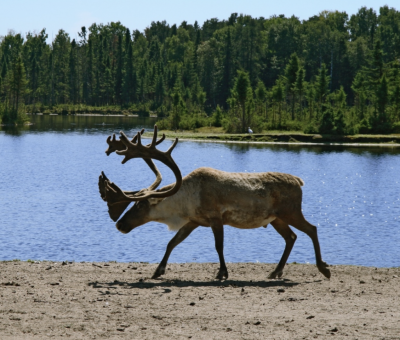It is no longer enough to put it in a vacuum to protect nature

As COP 15 prepares to adopt the objective of dedicating 30% of the planet to the creation of protected areas, there is reason to wonder whether this solution is the best in a context where the rapid evolution of the climate jeopardizes the resilience of protected areas. Consider the case of forests. In recent months, in Quebec, while the Premier had declared that a balance between the economic and environmental aspects remains essential, the public hearings on the survival of the woodland caribou highlighted a major split between the point of view of the supporters of the strict protection of nature and those advocating the rational use of resources. Is a happy medium possible?
Some are asking for strict protection of forest areas sheltering caribou, others want to continue their forest management activities. Without denying its impact, forestry is not the only cause of the decline in caribou populations. Other factors demonstrated by science come into play: habitat degradation and fragmentation by forest fires and insect epidemics, disturbance caused by resort and eco-tourism activities, hunting and poaching, wolf and bear predation, food availability, parasites, diseases and biting insects, climate change and extreme weather events. Caribou are therefore affected simultaneously by a combination of factors such that it is difficult to assess their relative effects separately. Forest management alone cannot be responsible for the decline of woodland caribou populations and is in fact only one of the many causes.
What if the forest itself was threatened? According to the Canadian Department of Forests, Canadian forests have become net emitters of CO2 over the past twenty years due to their poor management in the face of the vagaries of the climate. Due to a lack of resources, vast tracts of forest left on their own are systematically destroyed by invasive species and fires that return the phenomenal amounts of carbon sequestered by these trees to the atmosphere. Is integral protection without adequate human intervention enough to protect ecosystems?
Another dilemma arises. By removing thousands of square kilometers of forests from forest management, we are depriving ourselves of a renewable energy source and a building material that sequesters carbon for a long time. Is it possible to develop the forest without destroying its biodiversity and endangering its occupants?
The path of middle ground and balance suggested by the concept of sustainable development offers a solution to this dilemma. In Quebec, the current forest policy inspired by the Sustainable Development Act advocates forest management that recognizes and encourages the various functions of the forest, protects biodiversity and takes into account the expectations of all users in the face of the vagaries of climate change.
To do this, we need sustainable forestry that takes advantage of science and the most advanced technologies (remote sensing, modelling, local interventions) and makes it possible to identify both priority intervention areas (infection hotspots, fire risk areas) and protection areas. By targeted harvesting of forest resources in properly managed areas, it is possible both to increase the resilience of the forest and to market a source of renewable energy and a carbon-neutral building material.
Such work is costly and cannot be applied over vast territories without the adoption of a new economic model. By creating forest areas for sustainable use centered on carbon sequestration and the protection of biodiversity (the equivalent of what IUCN experts call category 6 protected areas), would it not be possible to finance forest management and biodiversity protection work by selling offset credits on the carbon market?
No, it is no longer enough to put nature in a vacuum to protect it. The impacts of climate change force us to rely on active conservation of natural environments based on scientific knowledge and to promote their various functions in a renewed economic model. This is a future-focused approach to sustainable conservation able to meet today’s challenges.
Jacques Prescott, M.Sc. biology, Associate Professor , Chair in eco-advising, Université du Québec à Chicoutimi
Gaston Déry, Forest Engineer, M.Sc., OC, C.Q., Strategic Advisor Sustainable Development

